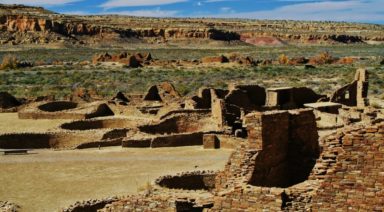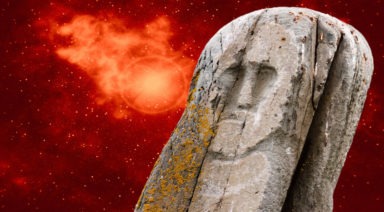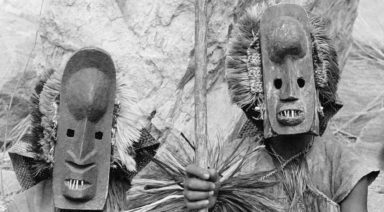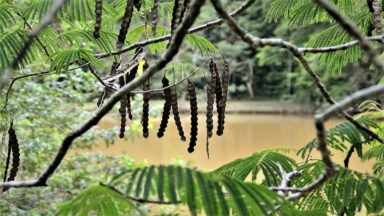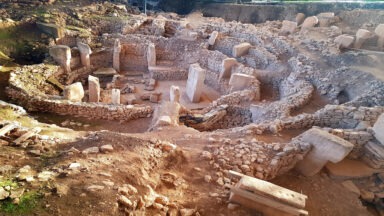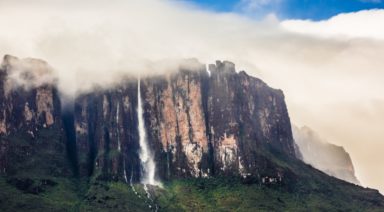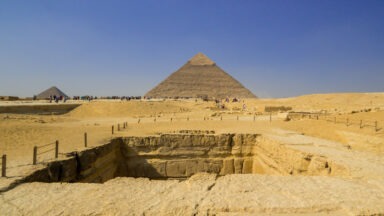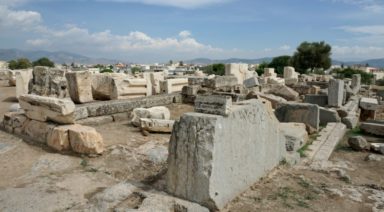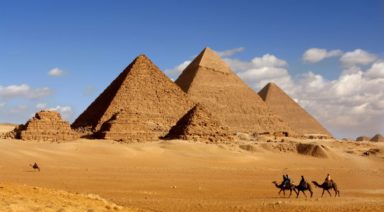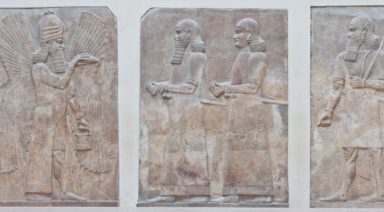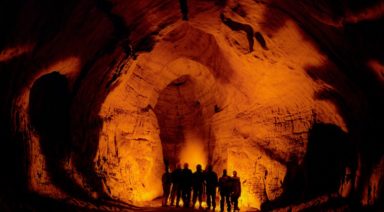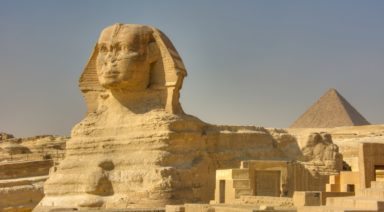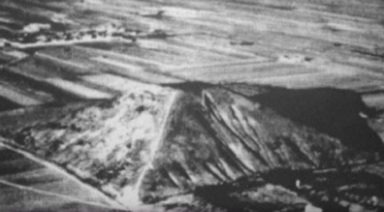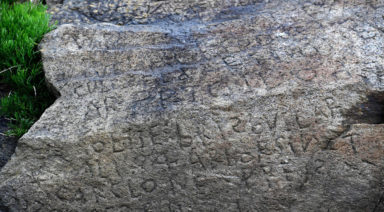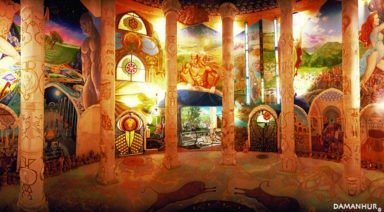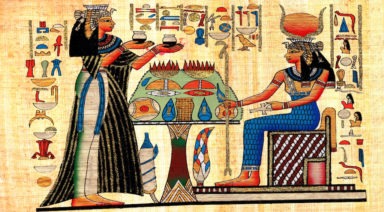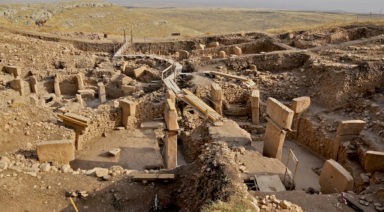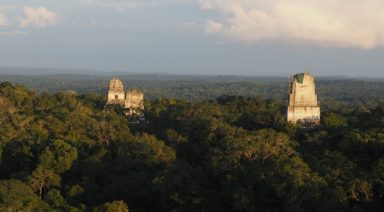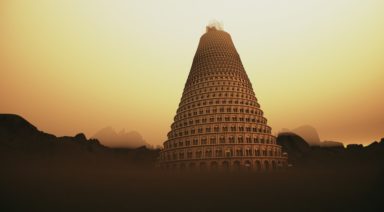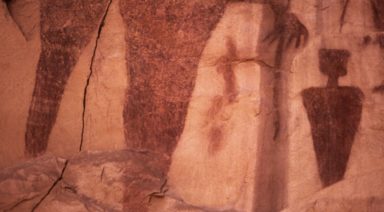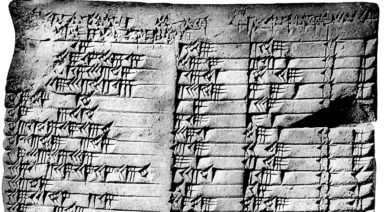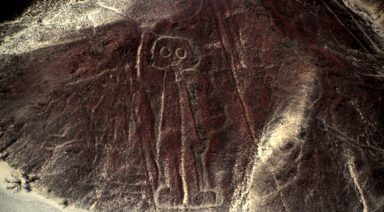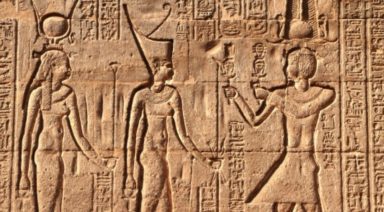Mysterious Geoglyphs in India Are Largest Ever Discovered
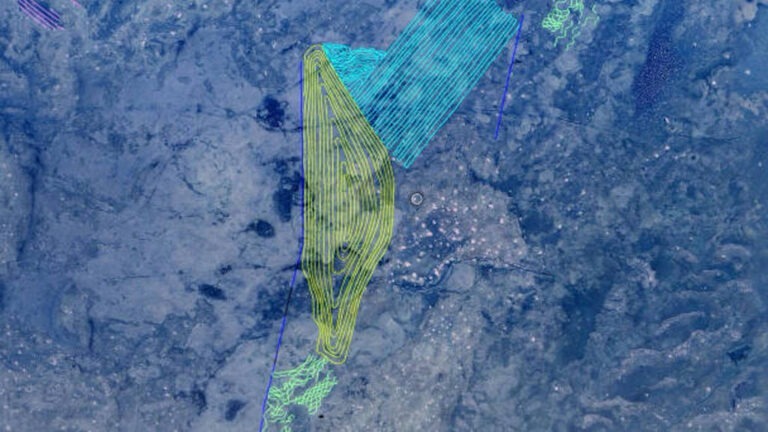
Researchers discovered the world’s largest geoglyphs in the Great Indian Desert. Will their findings reveal who made these giant, enigmatic designs, and why?
Geoglyphs are sprawling designs made by digging into the Earth or piling up stones to form what mostly appear as geometric lines, and more rarely, as humans and animals.
Usually only fully visible from above, they can be found all over the world with some dating back to prehistoric times, and others quite recent. The most famous to date are the Nazca lines in Peru. While there are various theories around their builders and function, none have been proven and continue to be widely debated.
Carlo Oetheimer is an independent researcher of geomorphology, the study of Earth’s landforms. While conducting a Google Earth survey of India, he and his son Yohann Oetheimer, made a fascinating discovery.
“I was traveling all over the desert, and suddenly I found lines in the desert similar to the Nazca lines. I was amazed, and I said, ‘Oh, what’s that?’ I found one place, then two places, then eight places almost. That was the way I found the Thar Desert Boha geoglyphs,” C. Oetheimer said.
“So, under Google Earth’s images, we could see a concentric spiral — concentric lines. We didn’t really know at that point what they were, but we had to go on the site, on the field, to understand them better,” Y. Oetheimer said.
When the researchers visited the desert site in India’s Rajasthan region, what they found astounded them.
“We brought a drone with us to be able to take aerial photos of the geoglyphs. With the drone images we could finally see the true form of the line, which is a spiral,” Y. Oetheimer said.
“Those glyphs are really, really big. They are the biggest geoglyphs discovered so far on Earth. It’s a big spiral which is an 11 km continuous line. The other one, which is connected to the spiral, is a serpent-shaped line with many patterns. We’ve managed to reproduce 48 km of lines. In the lines, you have archeological features which are called memorial stones. The big ones are in memory of deceased persons. For us, these landmarks are a symbol of death. We have to understand if there are connections between these Hindu memorial stones and the lines,” C. Oetheimer said.
Given the difficulty of precise archaeological dating in a desert environment, the Oetheimers are very cautious about providing any definitive interpretations of the origins and meaning of the geoglyphs. They are, however, working on some ideas.
“Concerning the antiquity of the lines, the main point, of course, is not the fact that they are at least 150 years old,” C. Oetheimer said. “We don’t know exactly, but I’m almost sure that they are not old, that’s for sure. What is interesting here is more the symbols. As the line ends with a little spiral or begins with a little spiral, we were wondering if this was a kind of global symbol of the life of a human in the Thar Desert. It’s obviously made to see from above, so we’re supposed to see a symbol of heaven, the afterlife, and the gods. With the north-south lines we were wondering if they could symbolize something with the cosmos, and suddenly we got the idea that we could try to separate both the Ursae Minoris, so the constellation of Ursa Minor, on this spiral. This gives an interpretation of how this is a message to the cosmos; to the people who are in this other world.”
The team plans to continue trying to glean further information about these fascinating designs. However, it is likely, they say, that the true origins will remain a mystery.
Chaco Canyon: The Key to Space Travel?

Today, Chaco Canyon is one of the best places in the U.S. to view the stars. Modern-day visitors can stargaze in the same place where ancient peoples once lived and thrived for hundreds of years, without light pollution interfering with the view.
The ability to see the stars so clearly from this 10-mile canyon also fascinated the Anasazi people long ago. An elaborate civilization flourished here between the years 850 and 1250 AD, consisting of numerous, multi-storied stone buildings that were carefully constructed in alignment with the cosmos and cardinal directions.
Although the canyon was inhabited for roughly 400 years by a highly intelligent and sophisticated tribe, its residents vanished without a trace. To this day, no burial grounds or grave yards have been discovered in this isolated canyon and researchers remain puzzled by the sudden disappearance of the ancient society.
Archeologists aren’t the only ones who are interested in this prehistoric civilization and its ancient observatories. NASA has been investigating Chaco Canyon for roughly 40 years. Why would a government agency that’s focused on space exploration have such a vested interest in these ancient ruins? Is it possible that they believe there’s a connection between Chaco Canyon and space travel?
What is Chaco Canyon?
Located in the Four Corners region of New Mexico, Chaco Canyon is a shallow canyon that was once home to ancient Native American peoples about a thousand years ago. What remains of the civilization indicates a highly sophisticated infrastructure that appears to have been constructed in alignment with various celestial bodies. Enormous, elaborate stone buildings housing roughly 700 rooms and numerous underground ceremonial halls (known as “kivas”) are just some of the features that make Chaco Canyon such an extraordinary place.
In addition to its complex construction, one of the great mysteries of the Chaco Canyon society is the rationale for its establishment in the first place. The canyon resides in one of the harshest places on the planet — scorching 100+ degree summers and frigid winters with limited rainfall in between make it extremely impractical for settlement. Why did the ancient Native Americans decide to build such an elaborate community there?
Due to their aptitude for astronomy, it’s possible that the Chacoan people settled in the canyon for the sole purpose of reading the stars — and that’s potentially why NASA is so fascinated by this prehistoric civilization. Perhaps our ancestors were more advanced than once thought.


